Homefront: Thanks for playing our demo
Spoiler warning: Plot spoilers for Homefront. All four hours of it.
Though I would love to expect a higher level of emotional engagement with my video games, when it comes to military-style first-person shooters, I don’t ask for much—probably because they almost always fail to deliver. You run through a bunch of corridors, shoot a bunch of dudes, pick up some new guns with one of seventeen different scopes, hit a slow-motion sequence, feel like a bad-ass. I’ve just distilled the essence of every modern Call of Duty game into one run-on sentence. Any story that happens in between is incidental.
The problem, then, is when I first heard about Homefront, I figured it wouldn’t be a military-style shooter, where gun fetishism takes precedence over compelling characters and an engrossing narrative. Maybe it is ridiculous to use the North Koreans as the aggressors in a massive land war against America, but unlike most people, I had no problems accepting what would otherwise be an outlandish concept—even when THQ put out a timeline suggesting Korea would be unified under Kim Jong-un a scant three years from now. I don’t care how unlikely the scenario is, so long as the scenario itself is interesting. And early press made it sound very interesting—you’re a survivor of the war with a mysterious past, allowed into a small enclave of Americans leading a double life as resistance fighters. No one really knows who you are, and no one really knows if they can trust you.
Had the game actually turned out this way, it would’ve been a lot more interesting than what we got. As it stands, Homefront probably won’t even be the best resistance-themed first-person shooter this year—that honour will probably go to Resistance 3, if the actual game is as good as the footage and concepts we’ve seen so far.
Considering that an honest-to-goodness movie scriptwriter was involved in the creation of Homefront, you’d think the narrative would be less sloppy. Maybe it’s that screenwriters don’t necessarily write good game scripts, or maybe the production team had trouble translating John Milius’s vision of Korean-occupied America. Either way, most of the narrative pieces fall away without leaving an impact, and you’re left with something that feels a lot like Call of Duty, except your squadmates look like characters out of a cancelled Left 4 Dead clone. Some examples:
Oasis. You’re introduced to the local resistance stronghold near the beginning of the game, after a scenic bus ride where you see Korean soldiers savagely beating people, shooting citizens execution-style in front of their children, and corralling Americans into detention camp queues. Oasis is, as the name suggests, a small piece of paradise inside the desert that the abandoned Colorado suburbs have become. But it feels like it comes too early in the game—giving us so much normalcy so soon makes it seem like the stakes really aren’t that high. The first time you walk out onto the porch overlooking Oasis, you see a guy barbequing dinner beside what look like tiki lamps—not exactly the hard life you imagined as a newly minted resistance fighter.
Of course, as you might expect, it all goes to shit a few chapters later; as retribution for a resistance raid (at a prominent nationwide computer store chain who probably paid good money to have their name featured, no less) the Koreans burn down Oasis. Except when you and your squad discover the horrific assault on the sanctuary, it’s barely recognizable as Oasis—and I don’t mean that in the sense that it’s so damaged that you can’t tell what it used to be. Oasis just looks like someone else’s backyard; if not for the dead civilians and Boone’s limp body hanging from the swingset, you might think you’d just stumbled into the wrong house. What happened to the greenhouse? The water tanks? All the infrastructure that you saw the first time around? You’d expect to see all that stuff burned or demolished, but you should at least see remnants of those things. Before I had to move on, I didn’t see a shred of evidence that a community lived there before the Koreans destroyed it. Sloppy.
Your squadmates. At times, they almost seem like the resistance fighters you’d expect. The sequence leading up to the now-infamous “Press A to jump in mass grave” prompt is a good example: it happens because one of your squadmates, Cooper, gets so angry at the sight of the mass graves that he shoots up the Korean soldiers digging them, which attracts a lot of attention and forces your squad to hide amongst the bodies. Another moment where everything works is when Hopper, in the midst of a surprise attack on a Korean supply depot, misfires a second round of white phosphorus, detonating it above the resistance fighters instead of the Koreans. That mistake, and the subsequent self-recriminations, are exactly the sorts of things you’d expect from ragtag guerilla fighters who don’t always know what they’re doing. And Hopper really sells the idea that he might’ve just blown up a lot of the people he’s grown close to over the months he’s spent in the resistance.
But these sorts of moments are few and far between. Everywhere else, your squadmates have the attitude and discipline of elite soldiers. I suppose I’d expect resistance fighters to pick up basic military lingo like “form up on me,” but it seems a little ridiculous that upon discovering Boone, no one breaks down for very long—Rianna is the closest we get to an actual emotional response, and by the time you manage to walk around the swingset, she’s totally fine again. It’s hard for me to comment on whether this is a realistic portrayal of how civilian combatants deal with stress and loss—I’ve never had to fight a guerilla war—but I don’t get the sense that Kaos or THQ really tried to find out, either.
It’d be bad enough if your squadmates just acted like robots, but they fight like robots too—invincible ones, at that. They get in the way when you’re trying to find cover, they leave themselves open to enemy fire that would kill you in a second, and they often don’t react to you unless you step in a very specific trigger point, at which point they’ll start talking to you or directing you somewhere. And let’s not even talk about the “wait until your squadmates catch up to you so they can bust open that door for you” minigame you’re constantly playing.
Guns. Homefront occasionally gets one thing right in the gunplay area—in certain sections of the game, you’re always about to run out of ammo. As a poorly supplied guerrilla fighter, this makes sense. On the other hand, even during these sequences, it’s usually pretty trivial to pick up another gun from a fallen Korean soldier and continue the fight.
Now let’s talk about all the things Homefront gets wrong, starting with what should be an obvious problem: what gun are you holding, and is it better or worse than the gun in front of you? For some bizarre reason, Homefront doesn’t display the name of your current gun anywhere on the screen, so you can’t even compare your gun to the ones lying on the ground. The only way to figure out which gun to keep is to drop your gun, just so you can read its name from the pick-up prompt, or know by heart what each gun is supposed to look like. Unless you have a gun fetish or a photographic memory, good luck with that.
It’s also somewhat unfortunate that one of the first times you pick up an assault rifle, it’s already got “Mk2 Red Dot Sight” or “Mk3 Holo Sight” written beside its name. There are only about ten or fifteen weapon models in the game, but the proliferation of sights and attachments multiplies this to give the impression of a vast array of weaponry. But what’s the point? Yes, red dots and holos are better than ironsights, I guess, by by and large they don’t affect the function of your weapon. And what the hell is the difference between a Mk2 red dot and a Mk3 red dot? Yes, I actually had the option to pick between two of the same gun with different mark sights once.
Perhaps the most useful way to think about Homefront’s failings as a single-player game would be to make a comparison that, at first, probably doesn’t seem obvious: Half-Life 2. Considering THQ’s emphasis on the interactive, cinematic nature of Homefront, it’s shocking how many things Half-Life 2 does better even though it’s more than six years old. The introduction to Half-Life 2, where Gordon Freeman arrives in City 17 and goes through processing, sets the atmosphere more convincingly than anything in Homefront, even though no one gets shot in front of their children.
And after that showy cinematic level, Valve doesn’t just drop any pretense of story-telling—it continues to sprinkle in bits and pieces that reinforce just how bad things have gotten, whether it’s a couple crying softly on a couch in an adjacent apartment or a poster showing the evolution of humans into Combine soldiers. Homefront is far less subtle when it tries to do the same thing, but also less consistent. Even basic things like Rianna constantly asking how many people we lost in the attack on the Korean depot lose their effect because in the previous battle, you were too busy shooting the enemy and hiding behind cover to see your resistance buddies get slaughtered or burned by phosphorus.
In fact, there are a lot of plot moments that never really get any explanation, as though Kaos believed stories were entirely a matter of “and then this happened and then this happened and then this happened,” and not at all concerned with how you get from point A to B. At the end of the game, you’re faced with an oncoming Korean tank column. The obvious solution to this massive attack is to have Cooper stand in front of the tanks with a flare so U.S. jets can bomb the Golden Gate bridge. In addition to killing a main character at the last second for no real reason, destroying the column of tanks is apparently enough to declare San Francisco free from Korean occupation.
Does this seem logical to you? Your ragtag resistance squad, combined with the might of a stranded military group who didn’t even have fuel until you came by, managed to retake San Francisco from what should have been overwhelming odds? And oh, by the way, you have a fleet of helicopters and jets as air support? Where on earth did you hide all this hardware from the Koreans? How did you manage to contact a resistance group in Colorado to bring you a bunch of fuel trucks, when it probably would’ve been easier to hijack some trucks that were already in California? But none of this matters—all you need to know is that San Francisco has been taken, and oh by the way the Europeans might come save you and THE END. What?
Finally, let’s talk about length. Half-Life 2 took well over 10 hours to complete, and there was a lot of story built into the plot—establishing setting, giving you some basic objectives, having a character you love abducted, making everything go to hell, and finally the big push by the resistance that’s always lurked in the background but hasn’t been able to strike until now. Homefront took less than four hours on Normal. Four hours—that’s only slightly more time than Hydrophobia, a $10 XBLA game. People criticized Medal of Honor for being short and highly scripted, but Homefront is far, far worse. And just because playing the numbers game is fun: I spent $10 on Singularity and got a seven-hour single-player campaign that was superior in most aspects. Even at 20% off the lower PC price, I feel like $40 is too much to pay for Homefront’s single-player.
But—and it’s a big “but”—Homefront also comes with a robust multiplayer component, one that sounded like it was taking aim at Battlefield in terms of class-based FPS multiplayer. I haven’t touched the multiplayer yet, and initial reports suggest it’s a lot better than the single-player, so there’s hope yet. We’ll see.
[This review originally appeared on Wesley’s Game Diary]

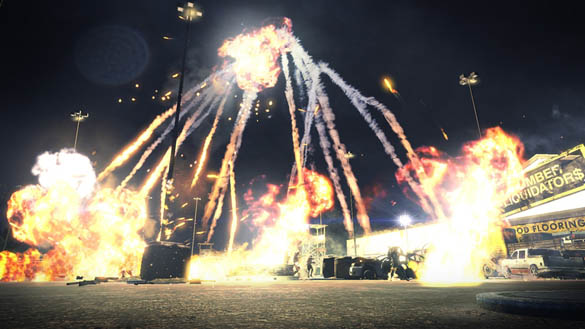
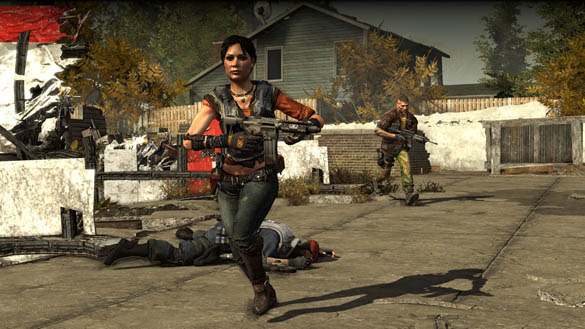
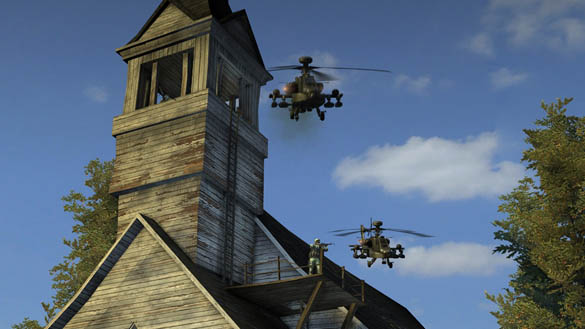
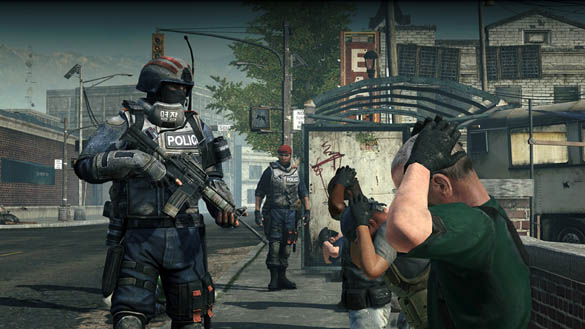
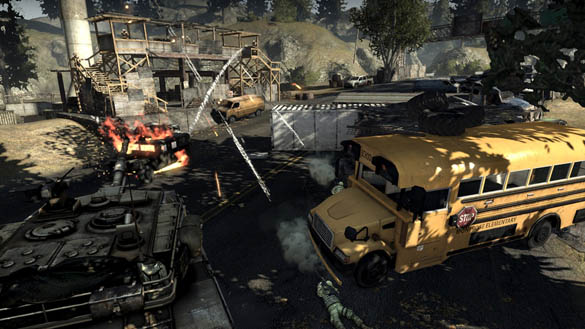
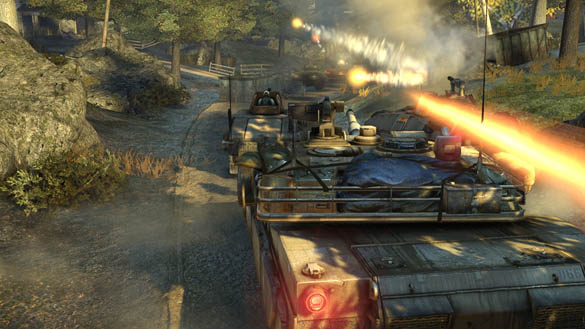



77971 960835Exploring in Yahoo I ultimately stumbled upon this site.Studying this info. 112280
614667 252021Some genuinely fascinating information, effectively written and broadly user pleasant. 578272